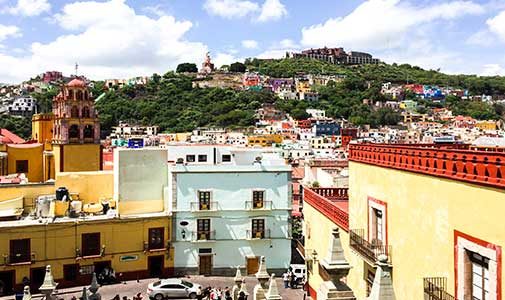Earlier this year I had cataract surgery in Mexico. As an expat there on a valid residence visa, I could have gotten the surgery for free through Seguro Popular, Mexico’s national healthcare service. But, because I’d had eye surgery some time ago, I chose to go to the opposite extreme: To get the very best private care available to me. The results were superb. And my total cost for top-flight surgery: About $1,860…half the average cost of basic cataract surgery in the U.S.
Here’s what I got for my money, and how it broke down.
First, I got a recommendation for an ophthalmologist from a friend who’d recently had cataract surgery herself. I got the doctor’s contact information on a Thursday, called on Friday, and was given an appointment for the following Monday.
The doctor is in León, an industrial city of about 1.6 million that’s about an hour away from my home in Guanajuato, in Mexico’s Colonial Highlands. For expats in Guanajuato, León is our go-to destination for shopping, specialty items, and advanced healthcare: The city has several excellent hospitals. My doctor is in the doctors’ building attached to the Hospital Los Angeles. The Angeles hospital group is a Mexican-owned, 25-hospital chain throughout Mexico whose facilities closely resemble what expats are familiar with in the U.S. (See: Hospitalesangeles.com.) Facilities are modern, many specialties are offered…and fees are relatively expensive for Mexico.
My initial visit to the ophthalmologist, which cost 3,200 pesos—around $160—covered a complete exam, including a glaucoma test, as well as a separate tomography of both eyes.
After examining me, the doctor said I definitely needed cataract surgery in my right eye, but not in my left. Because I had LASIK surgery in my right eye 20 years ago to correct severe nearsightedness, we’d need to double-check measurements of my eye for the replacement lens he’d install during surgery. He recommended that I go to an intraocular specialist with whom he’d always gotten great results. The doctor called the specialist right then, and I went directly from one doctor’s office to the next, in a nearby hospital.
The intraocular specialist did another tomography, followed by a sonogram of both my eyes, once with the lids shut and once with my eyes open. (Who knew sonograms of eyeballs were a thing? I didn’t.) She said she’d need a couple of days to analyze the results and make a recommendation to my ophthalmologist. Her fee: 1,900 pesos (about $100).
The very best private care available.
In the meantime, I set about getting the additional pre-op tests that are required before surgery. I needed blood work done (cost around $15 at my local lab) and an electrocardiogram. In the interests of speed, I went to a local cardiologist in Guanajuato’s historic center, an easy walk for me. The doctor’s fee plus the EKG came to 2,300 pesos, or about $120. (A friend also needed an EKG pre-surgery at about this same time. Instead of going to a doctor, she had the EKG done at one of Mexico’s pharmacy chains. Her EKG cost 85 pesos— about $5. Looking back, I wish I’d been that savvy.)
I scanned my EKG and the results of my blood work, and sent everything to my ophthalmologist’s email. The following Monday—just one week after my initial exam—I called the doctor, and we scheduled my cataract surgery for noon that Wednesday.
The doctor advised me to have just a light breakfast early on Wednesday. I arrived before noon and spent nearly two hours on check-in, paperwork, consent forms, and prep. Note: A friend drove me to the hospital and stayed during the surgery. This proved to be key, as patients need someone with them who can co-sign paperwork and drive them home.
After completing the paperwork, an admin took me to a private hospital room, where I changed into a gown and slippers and got into a hospital bed. A nurse attached an IV, with a glucose drip, to my arm. Then the anesthesiologist arrived, friendly but business-like. “We’ll give you a topical anesthetic in the eye,” he said, “and a mild sedative through the IV.” I would be conscious during the procedure, he said, but in no pain or distress.
The ophthalmologist estimated that the surgery would take an hour and a half, and he was correct almost down to the minute. By about 3:30 p.m. I was back in my hospital room. After sleeping off the sedative a bit, I tucked into the hefty lunch that had been delivered while I was away. Steamed veggies, chicken stew, bread, and a whole pitcher of freshly squeezed pear juice. Yes, folks, hospital food can be tasty!
At about 5:30 p.m. I checked out and we headed back to Guanajuato for the evening. The next morning, I took the bandage off my eye and could see perfectly. I applied topical antibiotic drops and wore protective sunglasses when I went outside.
Two days later, on Friday, I had a checkup, then returned about 10 days later for a second check-up. My doctor checked vision in my right eye—20/20, better than I had after LASIK. He then checked my left eye for good measure before giving me the all-clear. His fee, which included surgery, followup, and all hospital costs, was 29,000 pesos. I paid by U.S. credit card, and the amount on my statement lists the cost as $1,465. Adding in my initial doctor’s visit and all the related costs, the entire cost of my cataract surgery comes to $1,860.
And I’ve been extremely happy with the results.

